
views
Adjusting Seat Belts with Shoulder Straps

Place your seat in the upright position. Your seat belt won't work as effectively if your seat is reclining back. Look for a lever on the side of your seat. This is usually on the side facing the side door. Pull it up until your seat is as close to a 90-degree angle as possible.
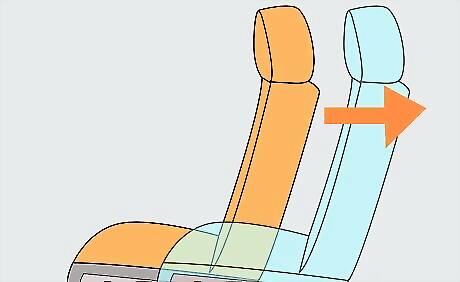
Move the seat away from the dashboard. The farther you're sitting from the dashboard, the safer you'll be in a collision. Move the handle under your seat, usually right in the middle, to move the seat forward or backward. If you're driving, make sure you can see well out of all windows and at least 3 inches (7.6 cm) above the steering wheel. If you're vertically challenged, purchase an accessory specially designed to adjust your height in a vehicle. Pillows, books, and other quick fixes can slide and actually cause you to crash. Contact your local AAA club or auto insurance provider for assistance.
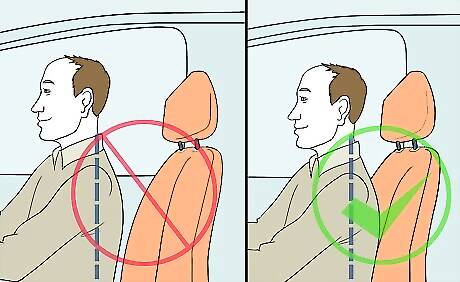
Sit up straight. Place your hips and back firmly against the seat back. You shouldn't have any room between the backs of your shoulders and the seat. This is to make sure your seat belt fits snugly and keeps you in place during a crash. If you slouch, you're putting yourself at risk for serious injuries like strangulation.
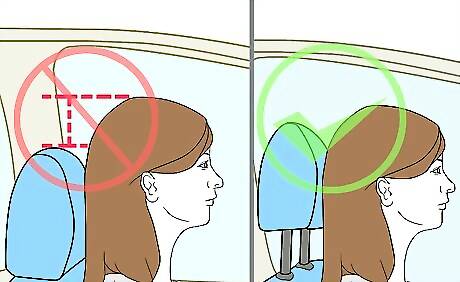
Adjust the headrest. The headrest is designed to keep your head from snapping back in a crash. Position it so that it's level with the tops of your ears and as close to your head as possible. Don't literally rest your head on the headrest while driving or as a passenger.
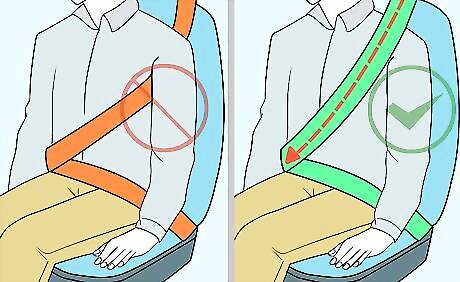
Wear the shoulder strap across your upper chest. Don't slip it behind your back or under your arm. If you're pregnant, make sure the strap runs between your breasts and clear of your baby bump. You can skip this step if you're in an older car whose seat belt only goes across the lap.
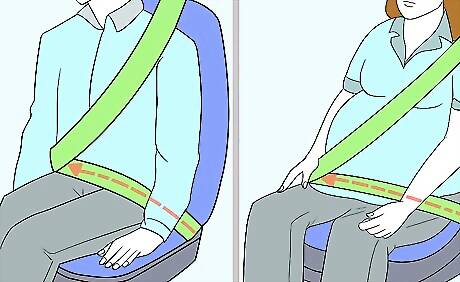
Adjust the lower strap across your hips. Avoid placing it over your stomach. Make sure the belt fits snugly. If you're pregnant, adjust this belt below your baby bump to avoid fetal injury. A word of warning to expectant moms: Avoid positioning devices like the “Preggy Pillow” or harnesses with shoulder straps only. Crash tests have shown them to be even more harmful to you and your baby.
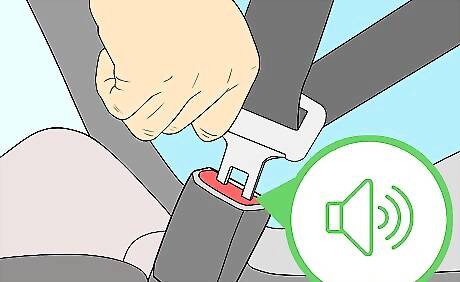
Click the seat belt latch into place. Slide the metal end of the buckle into the latching device. You should hear a click. Make sure the belt is secure by tugging on it. If the belt doesn't come unlatched, the seat belt is secure.
Troubleshooting Common Seat Belt Problems

Untwist the seat belt, if necessary. The belts should lie flat across your upper chest and your upper thigh areas. If your belt becomes twisted, fold it lengthwise so that it's flattened for about 12 inches (30 cm) below the buckle. Pull the buckle over the folded area and turn it the right way around. This might require some patience, but it's well worth your time to protect your safety.
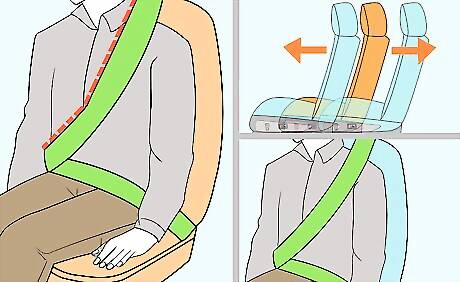
Fix an uncomfortable shoulder strap. If the strap feels like it's cutting into your neck, try moving your seat forward or backward. Newer cars allow you to correct this issue with a restraint system. If all else fails, purchase a padded seat belt cover. You can find these in most big box stores.
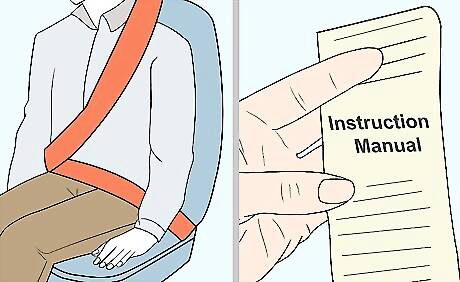
Loosen a retractable seat belt. If your belt is pulling you too tightly, part of it is probably stuck. Since each make and model is assembled differently, read your car user's manual for specific instructions. In many cases, pulling on the shoulder strap while the belt is unbuckled will do the trick. If this doesn't work and you're not trained in auto mechanics, take your car to your dealership if it's under warranty. If not, take it to a reputable mechanic. Many of the fixes detailed online involve taking the seat belt apart. Don't attempt this unless you absolutely know what you're doing.
Adjusting Seat Belts on an Airplane

Straighten your seat back, if necessary. Each airline has a different seat design, but you should find a lever on the side of your seat in many cases. Pull it up to bring the seat back up. If you can't find the lever, ask a flight attendant for help.
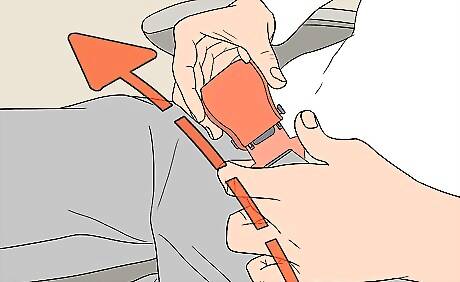
Fasten the seatbelt across your lap. Most airlines still use seat belts that only go across your lap. Locate the buckle on one side and the latching device on the other. Straighten out each side, if necessary. Insert the buckle into the latching device. Make sure you hear a click. Pull the belt until it's snug across the tops of your thighs.

Keep your seatbelt fastened throughout the flight. Do this even if the captain turns off the “Fasten Seat Belts” sign. If you decide to recline, make sure the belt stays snug across your lap. If you're using a blanket, place it between the belt and your body.
Adjusting Seat Belts with Child Safety Seats
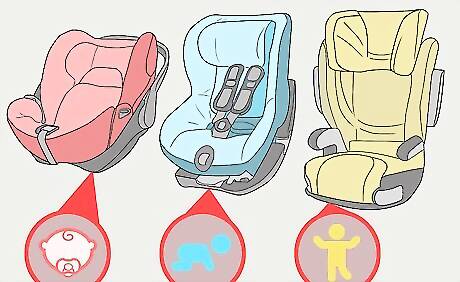
Purchase a seat appropriate to the child's age and weight. Use a rear-facing seat for an infant under 20 lbs. (9 kg). Buy a front-facing seat for a toddler between 20 and 40 lbs. (9-18 kg). Purchase a booster seat for a child between 40 and 80 lbs. (18-36 kg) and under 4 feet 9 inches (145 cm) tall. Never place children in front-facing car seats or booster seats in the front seat unless the passenger-side airbag is turned off. Infants and toddlers should always go in the back seat.
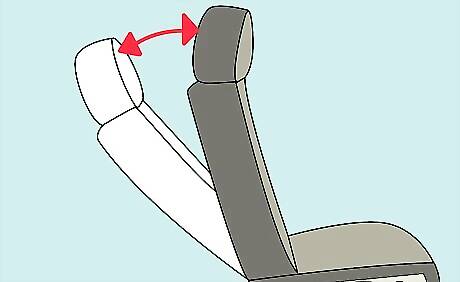
Straighten the seat back, if necessary. Look for a lever on the side of the seat facing the car door. In most models, lift it up to straighten the seat. Raise the seat back to a 90-degree angle.
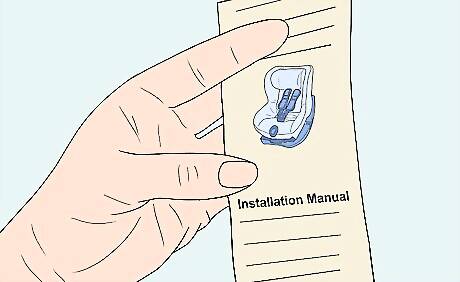
Install the car seat. Read your the car seat user's manual and follow the installation instructions. Depending on the style and model of your car seat, you might need accessories, such as a universal anchorage strap or a locking clip. If they don't come with the seat, consult your manual or he company website for information on ordering them.
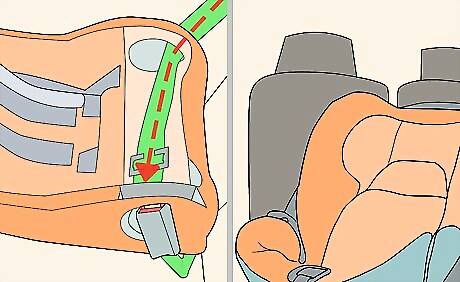
Secure a rear-facing car seat into the backseat. Insert the base first. Lace the bottom part of the seat belt through the belt path on the seat base. Fasten the seat belt and press the base firmly into the backseat. Finally, lock the carrier into the base. Untwist the belt, if necessary, before fastening the seatbelt.
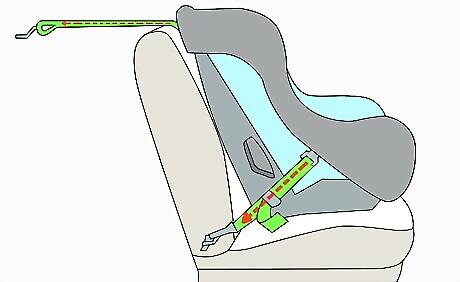
Buckle in a front-facing car seat. Untwist the seat belt, if necessary. Thread the belt through the belt path on the car seat. Fasten the belt and press the car seat into the seat cushion to tighten the car seat. Make sure you can't move it more than 1 inch (2.5 cm). Read your user's manual for further instructions.

Fasten the child into the car seat. Buckle the child into the seat according to the instructions in your user's manual. Seats for infants and toddlers usually have a tripartite harness that secures the child's shoulders, torso, and lap. Booster seats typically depend on car seat belts entirely.
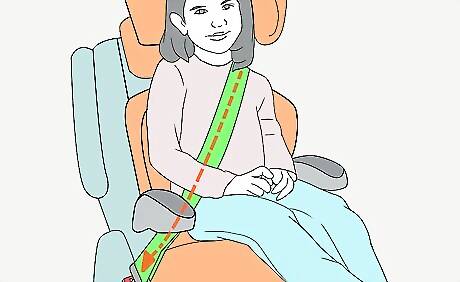
Secure a booster seat. Wait until the child is in the seat. Untwist the seat belt, if necessary. Then, bring it across the child's body and fasten it. Make sure the shoulder strap rests against the child's chest and that the lower belt rests on the tops of their thighs. Keep it away from their abdomen or throat. If the booster seat has armrests, keep the lower belt below them.















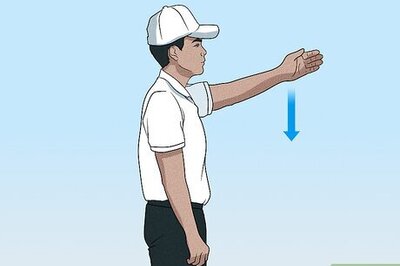

Comments
0 comment